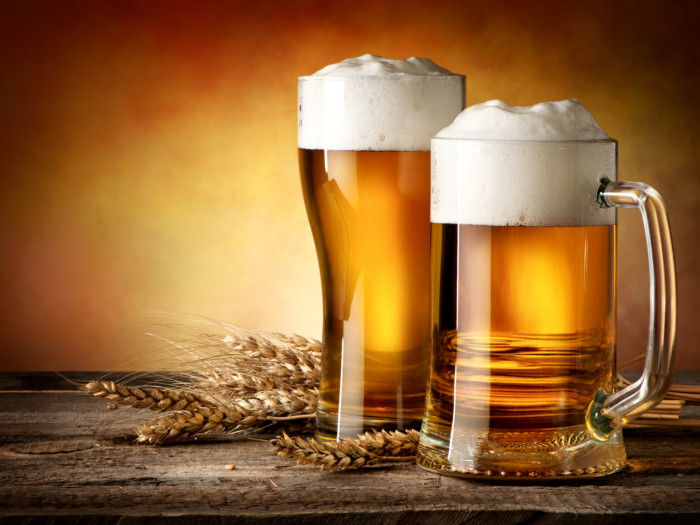Wheat beer shares some of the basic ingredients with other types of beer, but there are a few unique differences that set this brew apart.
What is Wheat Beer?
Quite simply, wheat beer is a beer made with wheat! More specifically, it is a beer that is made with more wheat than barley. All beers start with fermenting grain and most of them use barley as the dominant grain. However, the use of more malted wheat creates a pleasantly sweet and tangy taste. Lager and ale are the 2 types of yeast used by brewers, and wheat beers are made with ale yeast. Many pounds of wheat goes into each batch, and a liter of beer can contain anywhere from 10-40 milligrams of gluten, so wheat beer is definitely not gluten-free for those with an intolerance or allergy. [1] [2]
Nutrition Facts
Wheat beer is rich in calories and carbohydrates. A standard serving of a bottle or can of wheat beer (12 ounces) can contain anywhere between 170-180 calories and between 13-18 grams of carbohydrates. If you watching your calorie intake, then just remember that the higher the ABV, the higher the calories. Wheat beer does not contain significant amounts of fats, vitamins, or minerals. [3]

Wheat beer is any beer where a substantial portion of the grain used in brewing is wheat. Photo Credit: Shutterstock
Types of Wheat Beer
The different types of wheat beer include Hefeweizen, Witbier or white beer, Berliner Weisse, and many more.
- Weissbier or Hefeweizen: It is a traditional German beer from the state of Bavaria.
- Witbier: Also known as white beer, this kind of beer is native to Belgium and the Netherlands. It is named for its hazy color, which is usually quite pale.
- Berliner Weisse: It is a less common sour wheat beer, but also very popular in Europe. [4]
- Lambic: It is strong, funky beer and often brewed with ripe fruits for a distinctive taste
- Gose beers: They are flavored with coriander and salt and are perhaps the most divisive of all wheat beers. [5]
How to Make Wheat Beer?
You can make wheat beer at home with a home-brew kit. Pick any flavor you like and follow the instructions on the pack.

Easy Wheat Beer Recipe
Ingredients
- 1 wheat beer home-brew kit
Instructions
- Boil the malted wheat and barley from the kit in a large mesh bag in a covered kettle.
- Remove the grain bag and add the hops in their own mesh bags.
- Cool the liquid and transfer it to a fermenting container.
- Add your desired yeast, seal, and ferment for 1-2 weeks.
- It can now be bottled. Serve chilled.
Notes
Risks & Side Effects
Moderation in consumption is key. The risks involved with drinking excessive alcohol can be short term such as violence and injuries to long-term health risks such as chronic diseases. According to the Centers for Disease Control and Prevention, people who should not drink alcohol include women who are pregnant, individuals younger than 21 years of age, and people who are recovering from alcoholism or cannot control the amount they drink. Also, it should be avoided by people who are planning to drive or any other activity that required focus and skill. However, different countries have different rules on alcohol purchase and consumption. [6]
